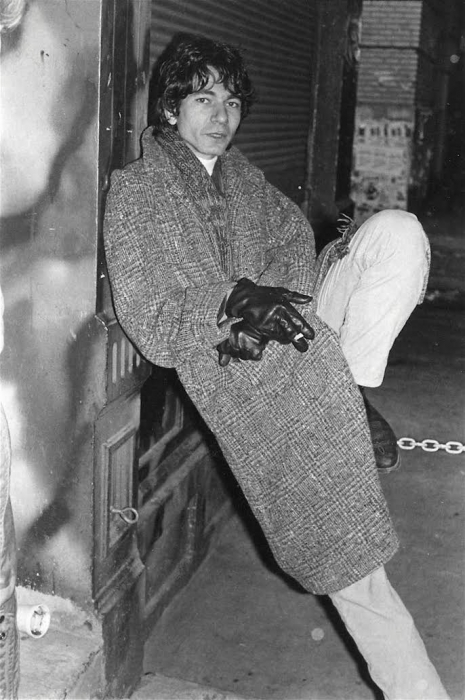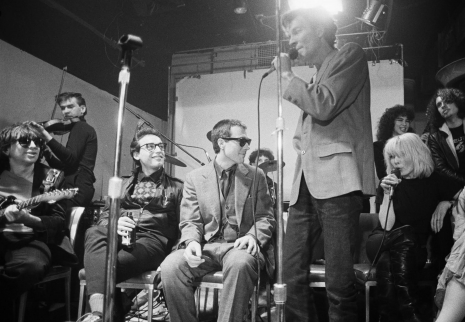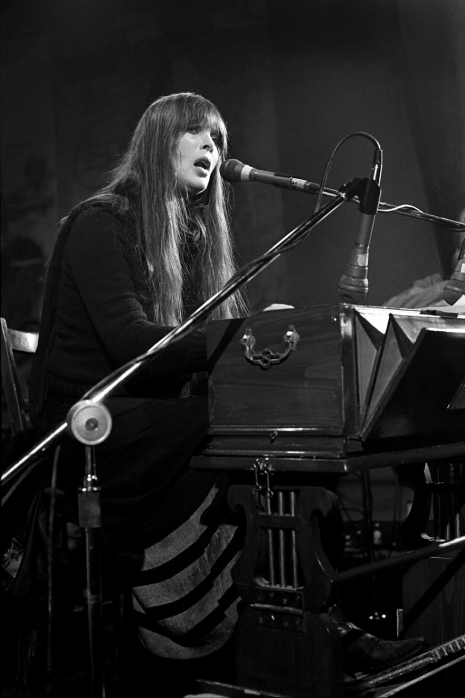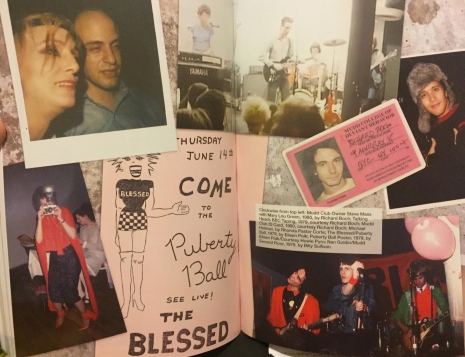
Here’s a drink ticket—enjoy the post!
“If you’ve been standing here for more than ten minutes you’re not coming in” announces Richard Boch in a stern but cute, almost teenaged stoner way. Don’t get me wrong, he means it. This was how “normal people” were greeted much of the time at the door of the Mudd Club (and many other ultra hip clubs in New York City at the time). This made getting in a huge badge of honor and being turned away a major disgrace. Imagine riding on THAT possibility just to pay to go into a nightclub? An anonymous “sniper” refused entrance once even hit Boch with a dead pigeon from a few yards away and sped off in a taxi cab!
Back then these normal people showing up at Manhattan nightclubs were mostly referred to as the “bridge and tunnel” crowd (Queens, Jersey, Brooklyn) a term not heard much these days, but once heard hundreds of times every night in NYC clubs. Some were 9-5ers, some wealthy disco-types expecting to stroll in on the doorman’s view of their Rolex or hot girlfriend. These regular folks were basically told to cool their heels or fuck off while an 18-year-old kid like me dressed to the hilt in what may have looked to them like idiotic rags, parted the seas and strolled in like I was Mick Jagger. This was not Studio 54 as they would find out soon enough. What it was, though, was a trip into known and unknown galaxies of hip culture throughout history, like a living, breathing museum/funhouse/drug den/concert hall/discotheque, mixed with nitroglycerine and LSD and thrown into a blender to create the unknown. The future. THE NOW!
The Mudd Club was almost literally unbelievable. Inmates running the asylum on an outer space pirate ship. This vessel was founded, funded and schemed by Steve Mass, who was on every side of the street all at once. When I first met Steve, he was roommates with Brian Eno and got that input, but he STILL drove me out to my parents’ apartment in Queens to help pull my record collection from under my bed, my parents shrugging their shoulders until reading about us a year later in the New York Times, thereby making it “Okay.” But really he was always very curious, constantly grilling me, getting inside my head. I once told him I thought he should round off the corners and ceiling of the Mudd Club like a giant cave and have live bats flying around the club. He actually considered it! He did this with certain other kids, rock stars, Warhol superstars, models, designers, Hollywood royalty, junkies, freaks and lord knows who else. We all had a bit of our heart and soul in that place.

Mudd Club owner Steve Mass. Photo by Kate Simon
The above mentioned Richard Boch is the author of a incredibly well-written new book from Feral House titled The Mudd Club. Boch was the main doorman there and the book is his autobiography or a coming of age story told in pretty much the aftermath of the glorious Sixties during the truly, in retrospect, harsh, dark, real version of what was hoped for, but lost in that previous decade. Richard’s story is all of our stories, those of us lucky (or unlucky) enough to have grown up or wound up in New York City’s grimy punk/art/drugged musical and historical mish-mosh. It was the Velvet Underground’s songs come to life after waiting a decade for the world to catch up to it, or crumble to its level.
To quote Richard:
I’ve always referred to the Mudd Club as the scene of the crime, always meant as a term of endearment. It was the night that never ended: the day before never happened and the day after, a long way off. There was nothing else like it and I wound up right in the middle. I thought I could handle it and for a while, I did.

Author Richard Boch. Photo by Alan Kleinberg
Boch was given marching orders orders early on to avoid bloated seventies superstars and the limo crowd. On one of his first nights of work he was faced with a huge, loud, and very sweaty Meatloaf. “Definitely not something I wanted to get close to, physically or musically,” Boch says, and ignored him. My first ever DJ gig was early on at the Mudd Club and I was told told by Steve Mass to do things like play Alvin and The Chipmunks records when it got a bit crowded, to “make everyone uncomfortable,” including myself. Of course I had the record. I also gouged a 45 with scissors insuring the record would skip horribly and then pretend that it wasn’t happening. Just long enough to get the asylum to freak out a little bit.
Later this stuff went out the window but it was quite a formative experience. Humor filtered through even to the most deadly serious moments there. The Mudd Club was a place where twenty people could literally have had twenty different experiences on the same night during the same hour as there was just so much happening on different mental/pharmaceutical levels and different floor levels. Everywhere you turned there was someone amazing. From the way I had grown up, seeing Andy Warhol, John Waters, David Bowie and the Ramones within a twenty minute span was “my” Studio 54. Watching Screamin’ Jay Hawkins while standing next to Jean-Michel Basquiat, seeing the Soft Boys, girl groups like the Angels and the Crystals, Frank Zappa, Bauhaus, Nico, the Dead Boys, Captain Beefheart, John Cale, a Radley Metzger film presented by Sleazoid Express or an impromptu freakout by Warhol Superstar Jackie Curtis, well this was my dream come to life!
My dream hasn’t changed in 40 years. I’m still in awe that it happened. And in the middle of all that I was allowed to put on my own demented conceptual events with friends (“The Puberty Ball,” etc.) and be a regular DJ. The people I came to know in the punk world who wanted more found it at the Mudd Club. Our mad obsession with the Sixties, especially the Warhol/New York sixties, informed much of what we did, and at the same time the Warhol Factory itself became more corporate. The Superstars were by then getting older and pushed out, but they were looking for more themselves, and they were looking to us to inform them, making for some extremely insane morality and immorality plays coming to life before our eyes. Mudd had the pull of what the press called “downtown,” and for the downtown types, well our voices were about to be heard loud and clear.

David Bowie and Dee Dee Ramone. Photo by Bobby Grossman

Howie Pyro deejaying at Mudd
Richard Boch understood all this, and was also an artist himself so he knew who everyone in the art world was, as well as all the new punk stars and celebutantes, no wavers, new wavers, culture vulture gods and the ones who would become gods themselves in a year or so. In the book he talks about being nervous about starting working there but man, he was the one for the job. In the pages of The Mudd Club, Boch’s quite candid about everything you’d want to know (gossip but not mean gossip: sex, drugs, more drugs, and getting home at ten AM, having done every drug and a half dozen people along the way—normal stuff like that). It reads in one, two, or three page sections, my favorite kind of book. You can put it down in ten-minute intervals or read it in any order you want, IF you can put it down at all. I have literally read certain sections backwards for 40-50 pages while looking for something and didn’t really notice. It made me laugh out loud, and it brought tears to my eyes. It’s kind of like “Please Kill Me, the Day After,” though it’s not an oral history as such, as it is written from Richard Boch’s point of view, but it has the same immediate anecdotal feel.

‘TV Party’ at Mudd. Photo by Bob Gruen
The club’s benevolent benefactor, Steve Mass, was responsible for making this incredible witches brew keep bubbling and kept the happenings happening. He was willing to do anything, just for the sake of doing it. Steve originally owned an ambulance service. For my 19th birthday they had a huge party for me on the second floor of the Mudd Club. Since Steve had medical connections, and since we were ALL junkies (well, a good 85% of us were), he furnished a massive cake with dozens of syringes with the plungers & needles removed so they could put the candles in the open syringes. This of course turned into a massive cake fight with the participants looking like the Little Rascals (with pinned eyes). Steve was always down for this sorta stuff. As for the main floor, the bands, writers and performers that I saw in a single month’s time was staggering! More than some people see in a lifetime.
From the book:
January 1979. The Cramps freaked out The Mudd Club with a loud Psychobilly grind that included such hits as “Human Fly” and “Surfin’ Bird.” A few months later, the “big names” started to appear…
He goes on to say:
The legendary Sam and Dave got onstage a few weekends later, and it was the first time on my watch that I got to see the real deal. By late summer, Talking Heads took the stage while Marianne Faithful, X, Lene Lovich, and the Brides of Funkenstein waited in the wings.
There were so many great performances: Scheduled, impromptu, logical and out of left field. The locals and the regulars were the staple and the stable and performed as part of the White Street experience. They included everyone you could imagine and some you never could. John Cale, Chris Spedding, Judy Nylon and Nico, John Lurie and Philip Glass were just a few. Writers and poets such as William S. Burroughs, Max Blagg, Cookie Mueller, and “Teenage Jesus” Lydia Lunch all wound up on the Mudd Club stage. The talent pool was so deep and occasionally dark that even Hollywood Babylon‘s Luciferian auteur Kenneth Anger got Involved.
Steve’s willingness and generosity along with his guarded enthusiasm offered support to a local community of artists, musicians, and filmmakers. Together with Diego (Cortez)’ and Anya (Phillip’s) short-lived but “dominating” spirit, the Mudd Club became an instant happening, a free-for-all with No Wave orchestration and very few rules.
Diego described the Mudd Club as “a container, a vessel, but certainly not the only one in town.” What made the place unique was its blank-canvas emptiness. When the space filled up, IT happened and everyone wanted to be a part. A living, breathing work of art, it was beautiful and way off center, a slice of golden time.
I was lucky, and soaked it all in.

Nico playing her wheezing harmonium. Photo by Ebet Roberts
All of us who got to be there were lucky. This was a timeless world of it’s own. A world that could be compared to any and all magical artistic movements, scenes or spaces. Dada. Warhol’s Factory, the Beats in NY and SF, Surrealism, etc.—times, places, people all endlessly written about as there’s just so much to say. Everyone involved had a unique experience, true to themselves. This wasn’t just a nightclub, it was so much more. It almost seemed like a private place where, on the best nights, people’s lives and fantasies were put on display and the public was allowed to watch. The public who just came to do coke and dance (as we all did) but who accidentally got touched by a bizarre and wonderful world that lived in the shadows of the city then, usually just brushing against them like a ghost in the night. Whether they even noticed or not, well, who cares?
This first book on the subject (I guarantee it will not be the last) is Richard Boch’s own experience, peppered with those of us who he interviewed for the reminders. This book is about his eyes opening, his chain-wielding power stance, his blowjobs, his drinks, his drugs, all of which are plentiful. It includes a little of most of us, the people we loved, the ones we lost, the games we played, and the love we shared of each other and our mutual history. Still though, there are a million stories in the Mudd’s microcosm of the naked city, this is just one of them.
And what a glorious place to start: right at the front door.

The trailer for the book
More Mudd Club after the jump…








